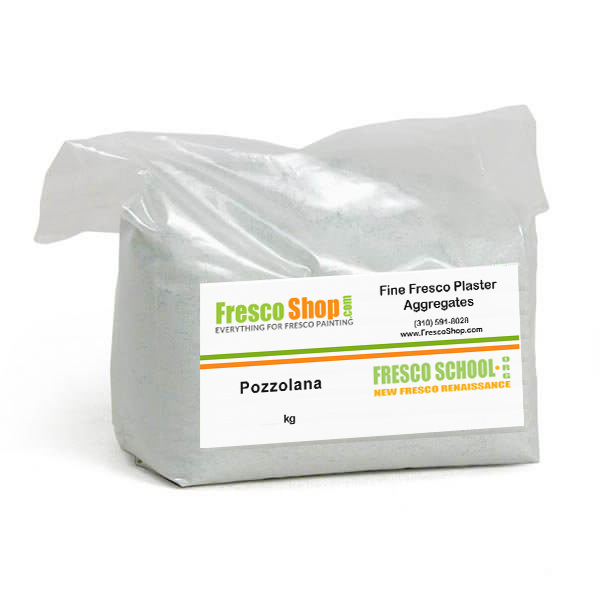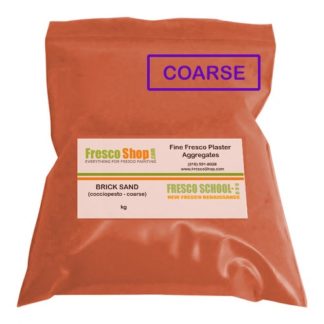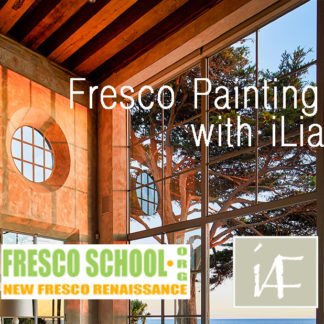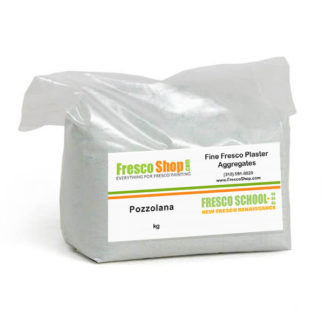Description
Pozzolana or pozzuolana (named after Pouzzoli region, Italy), is a natural siliceous or siliceous-aluminous material (volcanic ash) which reacts with calcium hydroxide in the presence of water at room temperature. In this reaction insoluble calcium silicate hydrate and calcium aluminate hydrate compounds are formed possessing cementitious properties.
Pozzolanas such as Santorin earth were used in the Eastern Mediterranean since 500–400 BC. Although pioneered by the ancient Greeks, it was the Romans that eventually fully developed the potential of lime-pozzolan pastes as binder phase in Roman concrete (lime, sand, crashed clay brick or ceramics /cocciopesto/, volcanic ash /pozzolana/) which was used for buildings and underwater construction.
Classic proportions for fresco walls are:
Scratch coat – 1 slaked lime putty, 1 sand, 1 pozzolana, 2 cocciopesto (crashed clay brick or ceramics) or 1 slaked lime putty, 2 sand, 2 pozzolana and/or* cocciopesto
Rough and Brown Coats – 1 lime, 2 sand, 1 pozzolana and/or* cocciopesto
Optional (mainly for exteriors or for sgraffito work)
Float/Arriccio Coat – 1 lime, 2 sand, 10-15% (1/3-1/2) pozzolana and/or* cocciopesto
*(and/or means either or both but totaling 1 part)
Pozzolana as well as cocciopesto are completely optional, majority of Classic Frescoes in Europe and around the world are done with regular lime/sand mortars (see Fresco Plaster Coats).
Vitruvius, writing around 25 BC in his Ten Books on Architecture, distinguished types of aggregate appropriate for the preparation of lime mortars. For structural mortars, he recommended pozzolana. Vitruvius specifies a ratio of 1 part lime to 3 parts pozzolana for cement used in buildings and a 1:2 ratio of lime to pozzolana for underwater work.
The use of only pozzolana in the mix (without sand) is partially due to the economics and simplicity – pozzolana was easily available and cheap.
Generally in 1:3 (lime:pozzolana) mix only 1 part of pozzolana is chemically binds to lime and other 2 parts act as an inert aggregate, hence can be replaced with any other aggregate aka river sand, marble sand without weakening the mix.
/Crashed Brick, cocciopesto, is a metakaolin, it reacts with lime and fortifies the plaster at a different pace, hence the effect is compound. The idea of mixing 2 “fortifiers” is rooted in the different porosity, density and the speed of the reaction – when pozzolana stops chemically bind, there is still “left over” uncured hydrated lime putty which will bind to cocciopesto and visa versa./
Fly-ash is an industrially made pozzolan, a byproduct of coal burning, used in large scale concrete works around the world.













FrescoShop –
fine sift